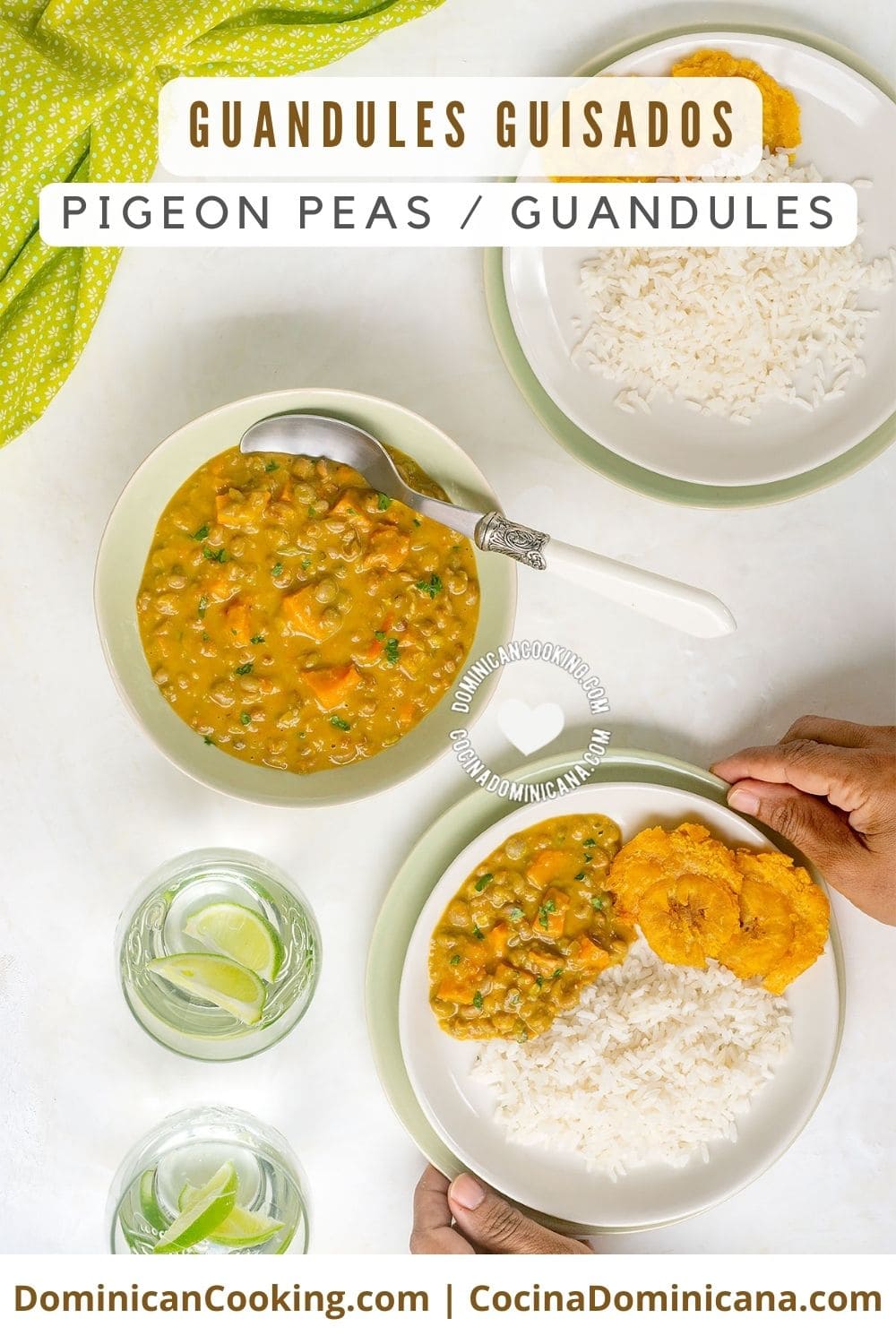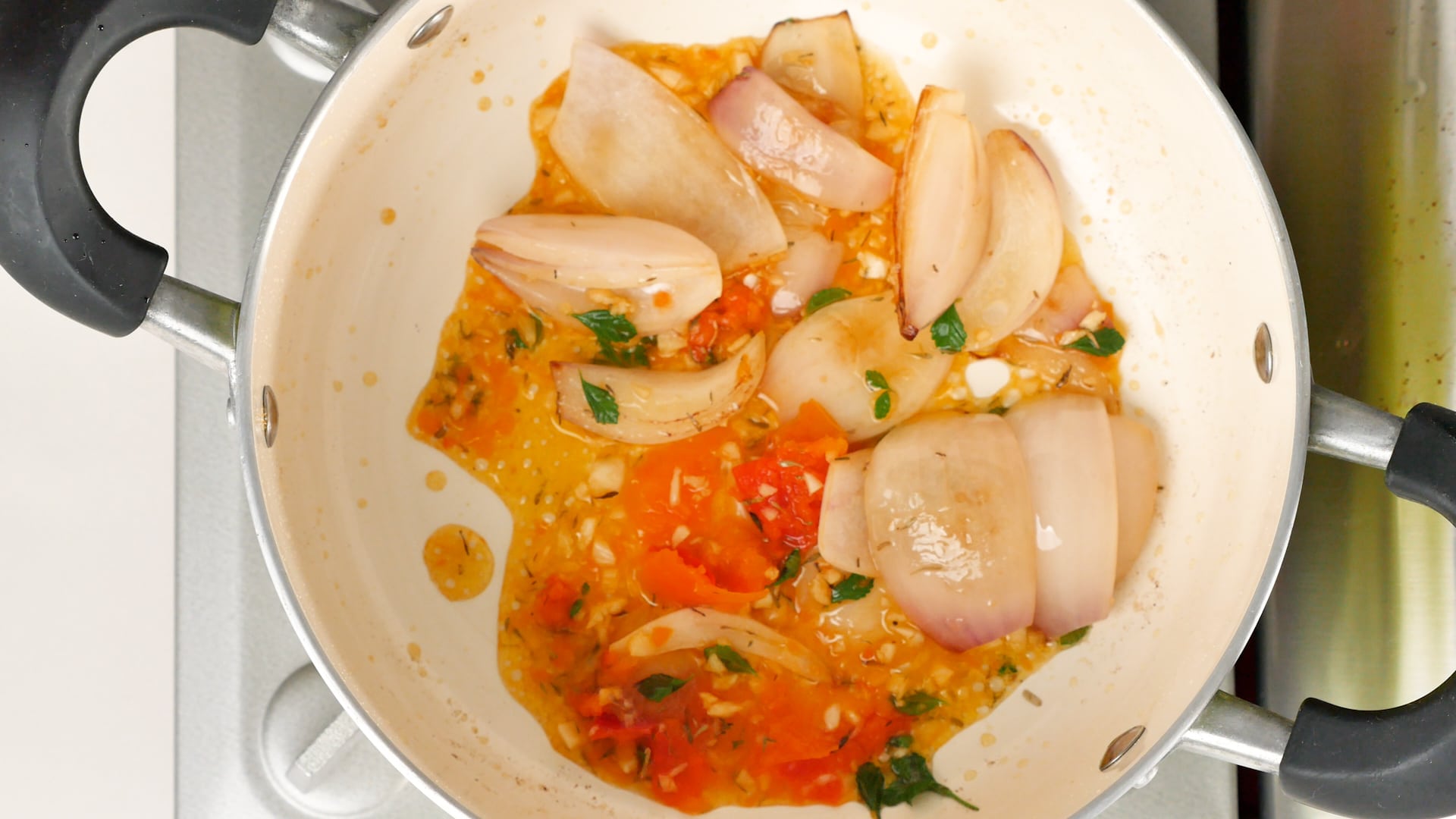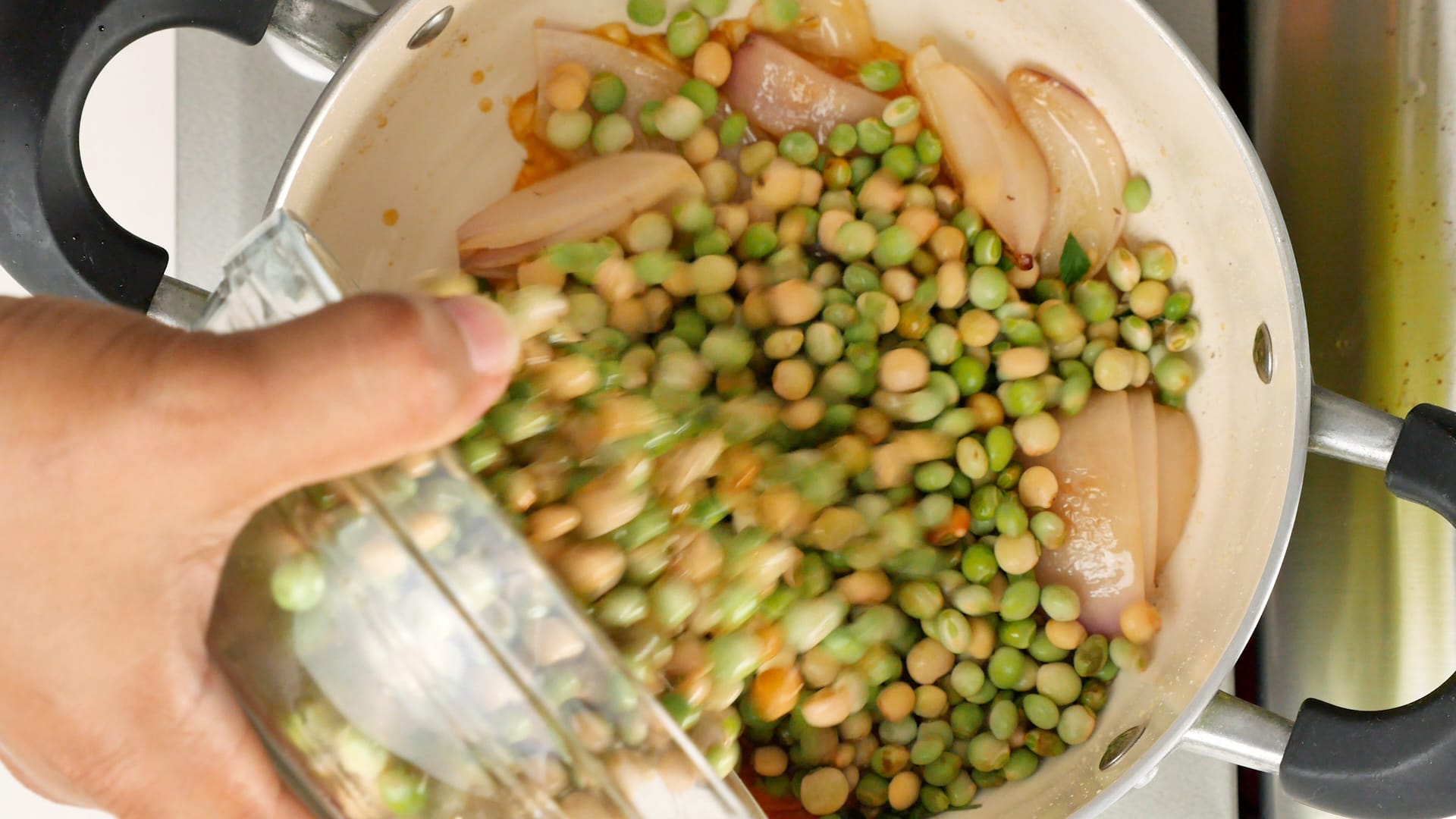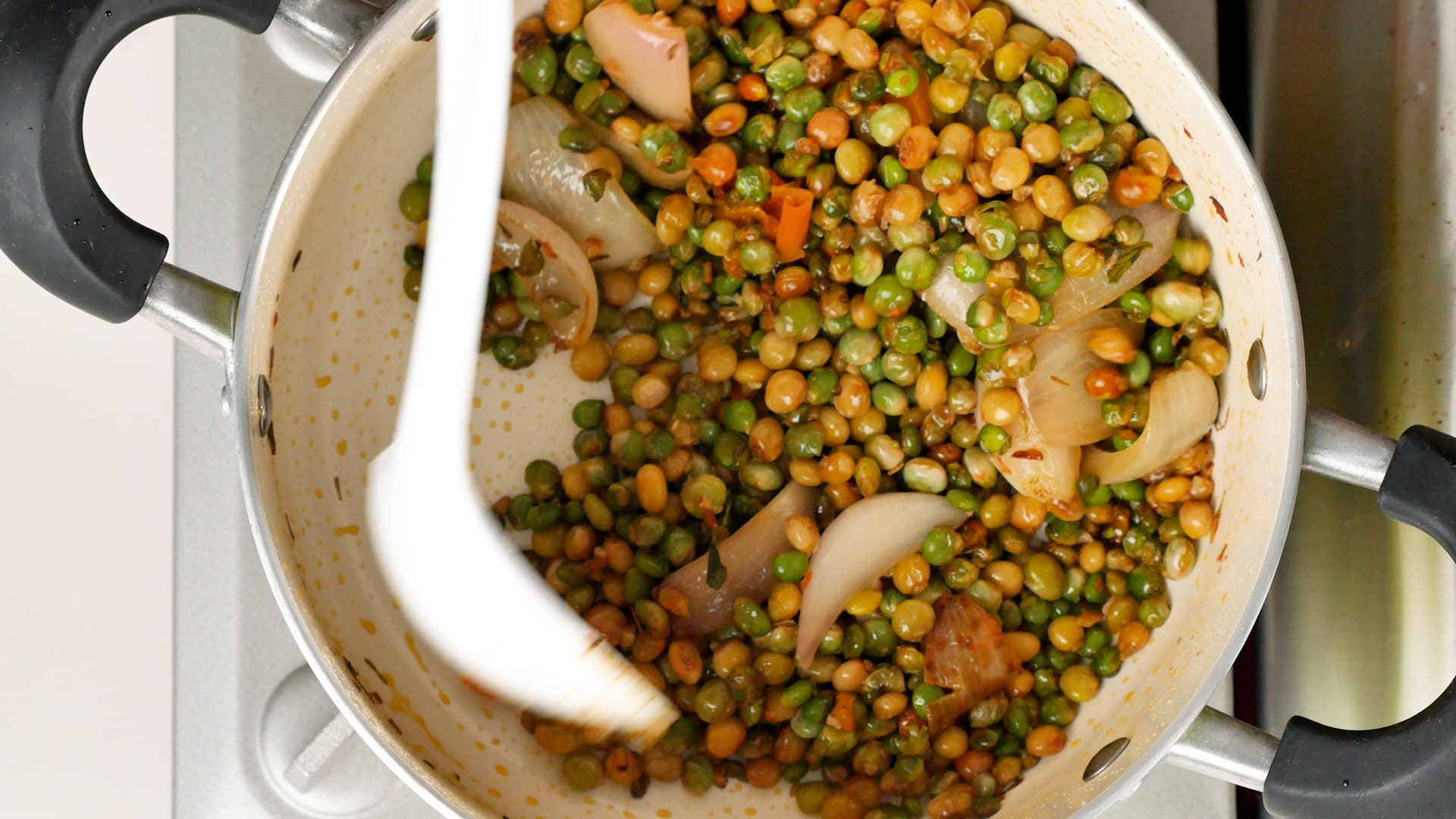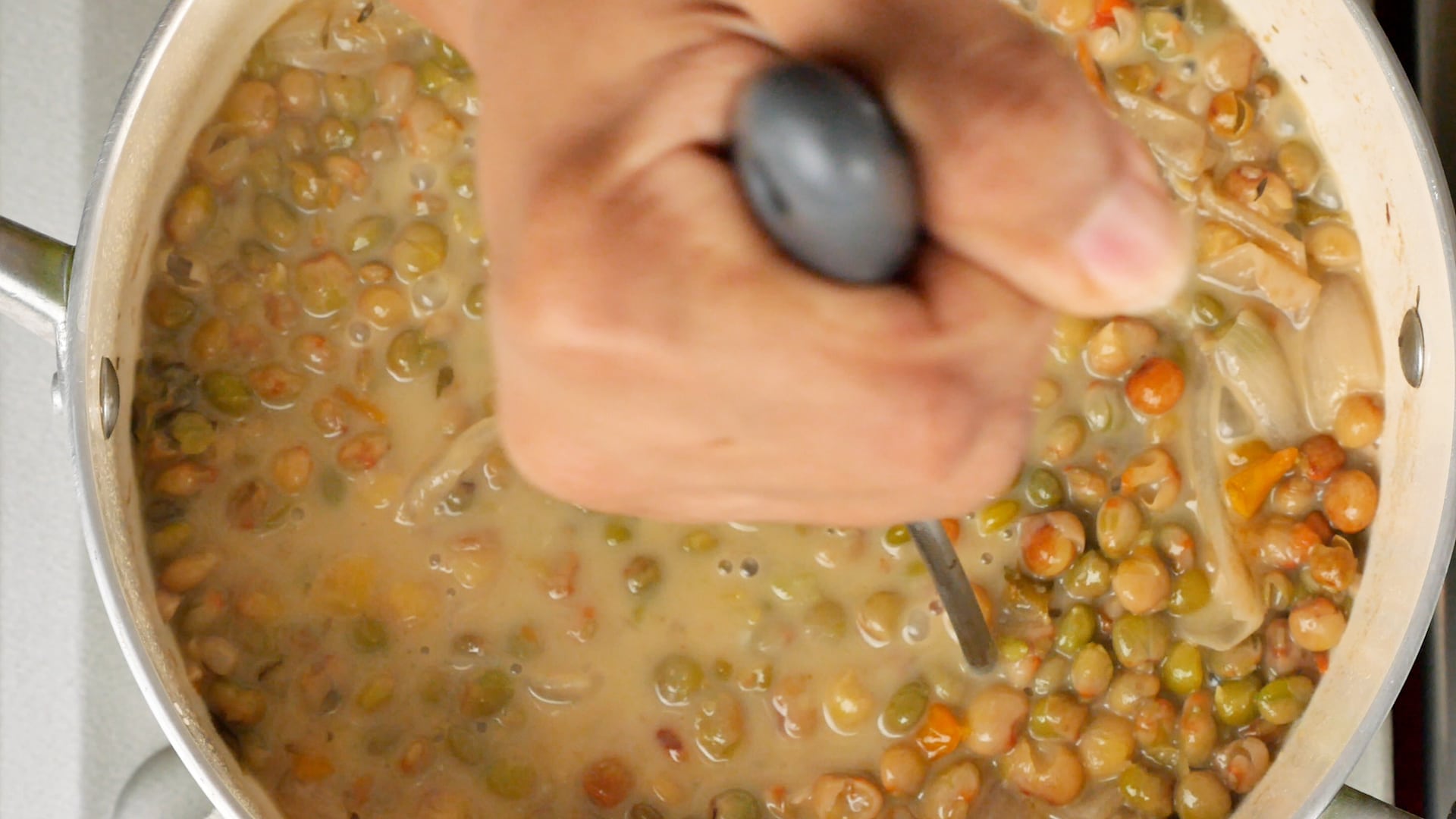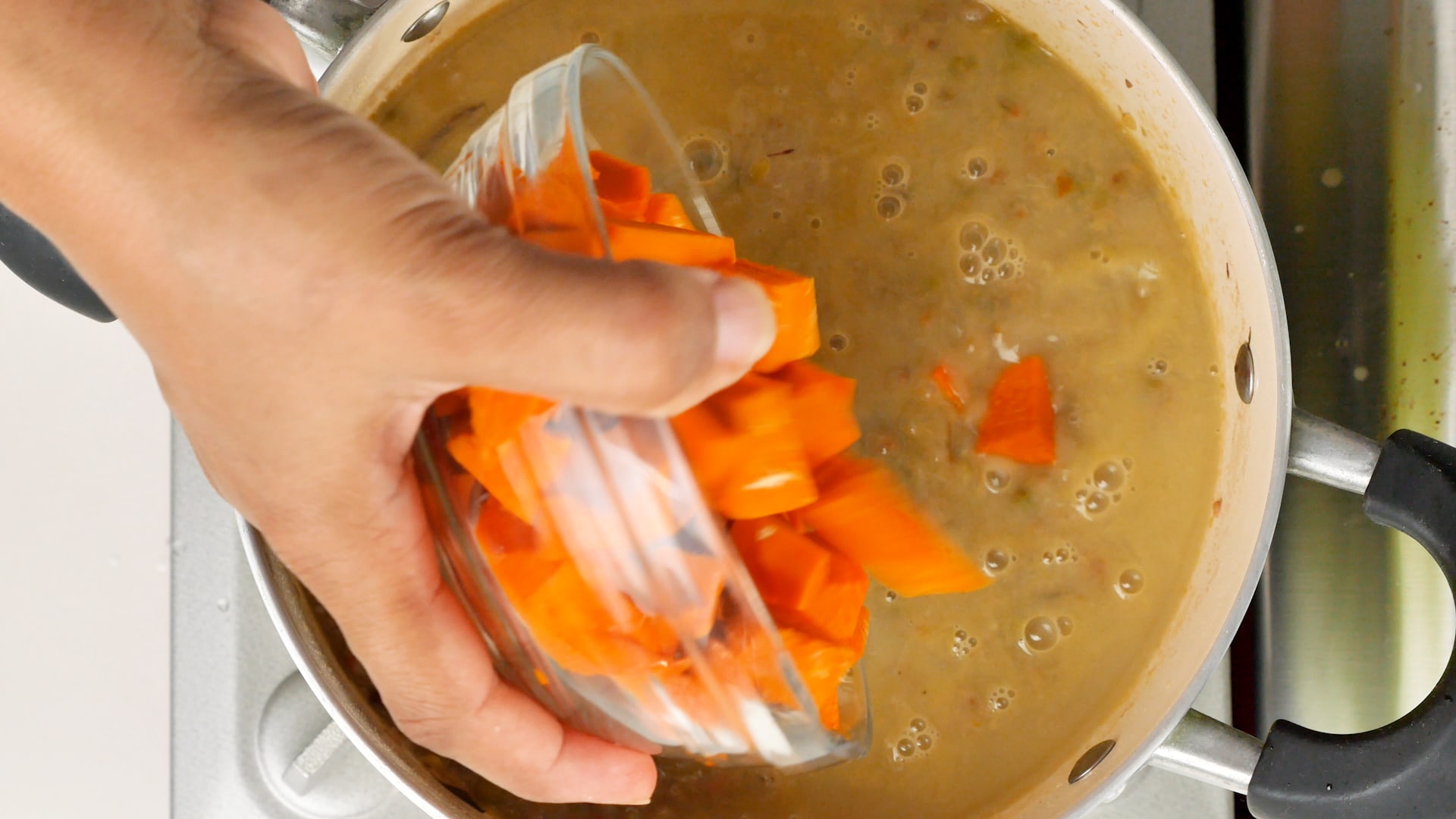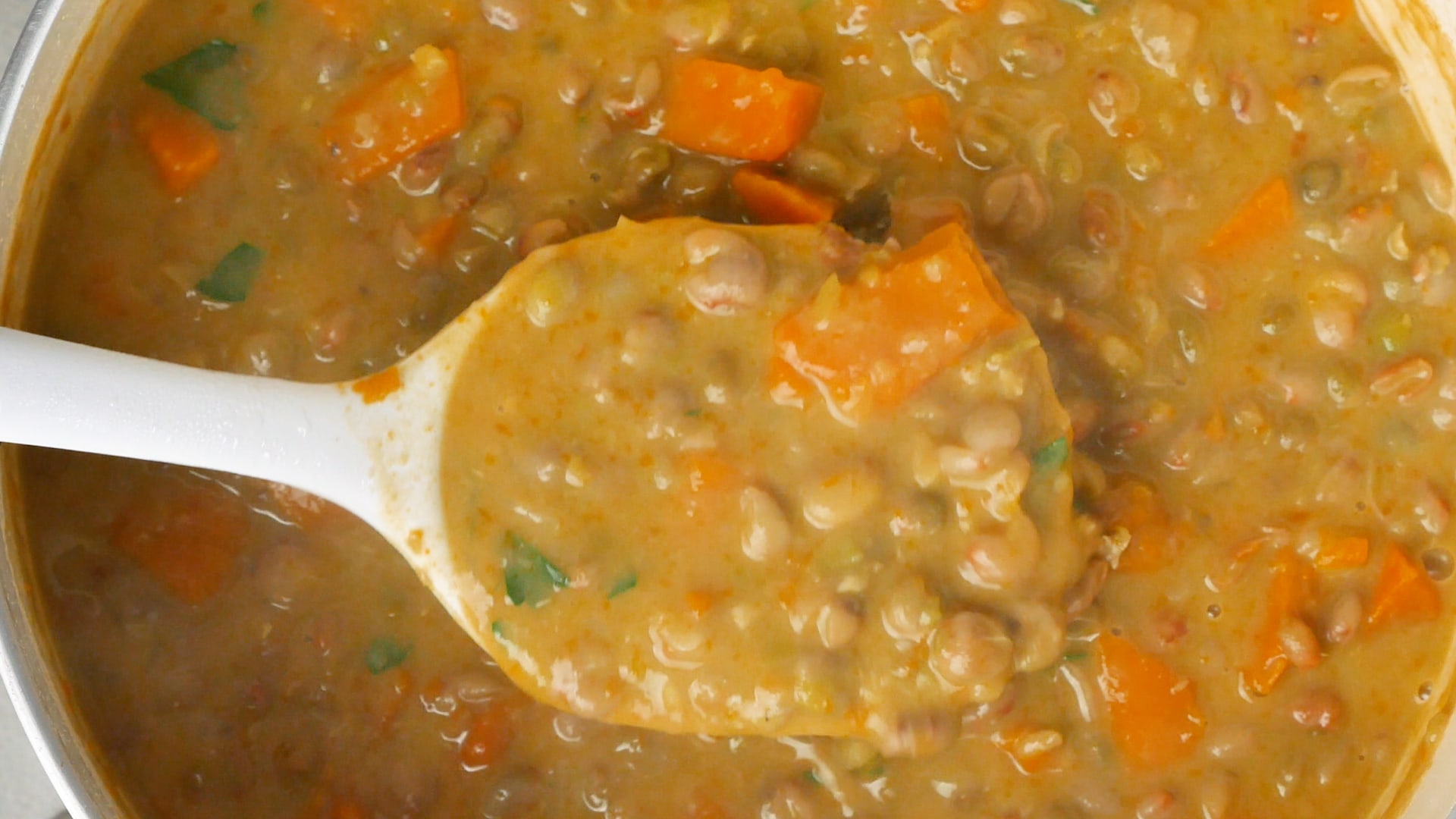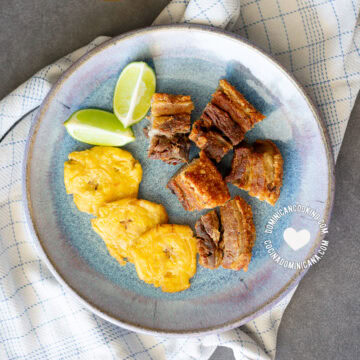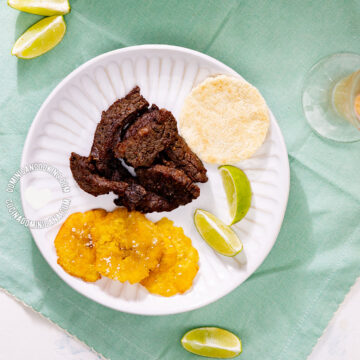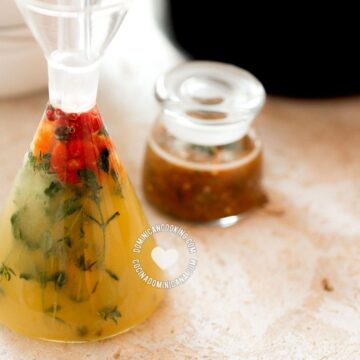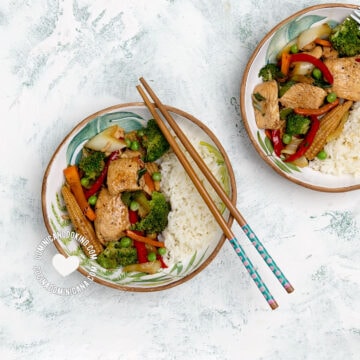Guandules guisados is one of the jewels of our traditional cuisine, a creamy, rich, smoky pigeon peas stew that is served over steaming white rice. Guandules con coco, a Samana version, is made even better with the addition of coconut. Try it and you'll agree with me.
By - Last reviewed . Published Dec 20, 2001
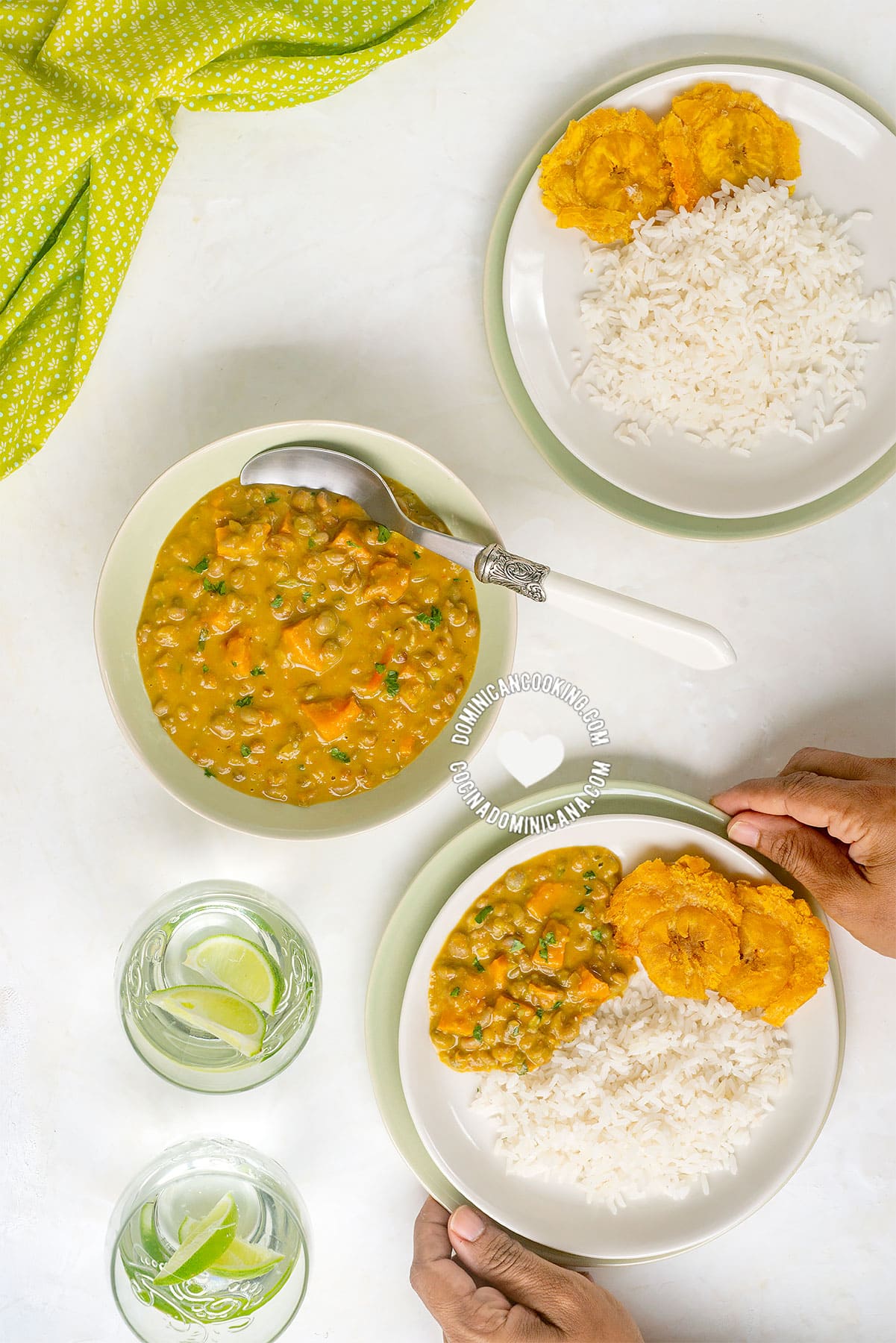
Why we ❤️ it
This guandules con coco recipe (pigeon peas with coconut) is one of our favorite guandules recipes, one guaranteed to delight your guests with the most amazing dish, a celebration to Samaná cookery.
The winning combination of coconut and guandules is further enhanced by the addition of auyama, which provides a very subtle sweetness to the dish, adds lovely color, and makes it quite creamy. Friends don't let friends eat guandules aguados.
Fresh, dry or canned guandules
For this recipe, while I always prefer freshly-shelled guandules, you can use canned guandules, or boil dry guandules.
You can see the instructions to boil guandules here.
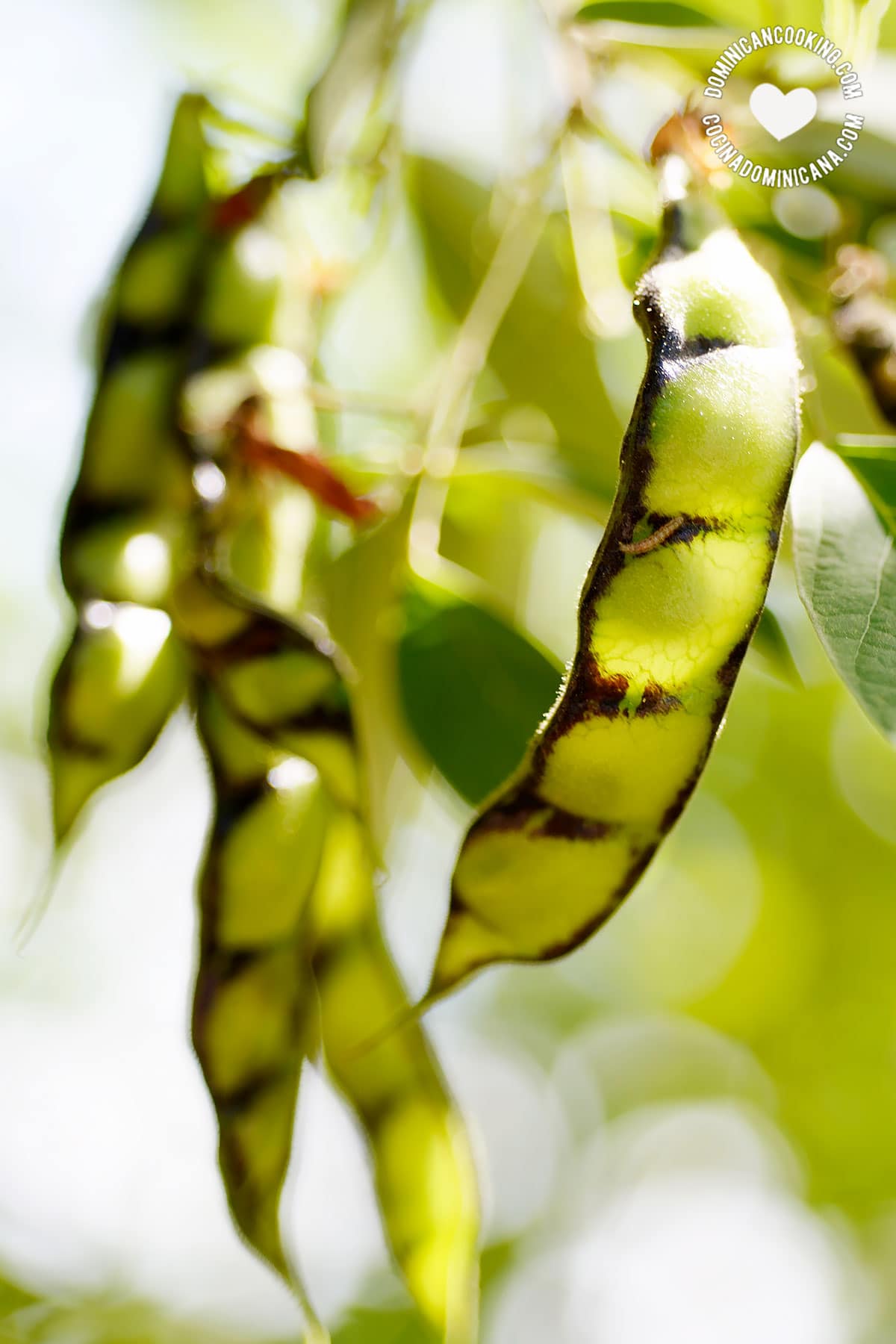
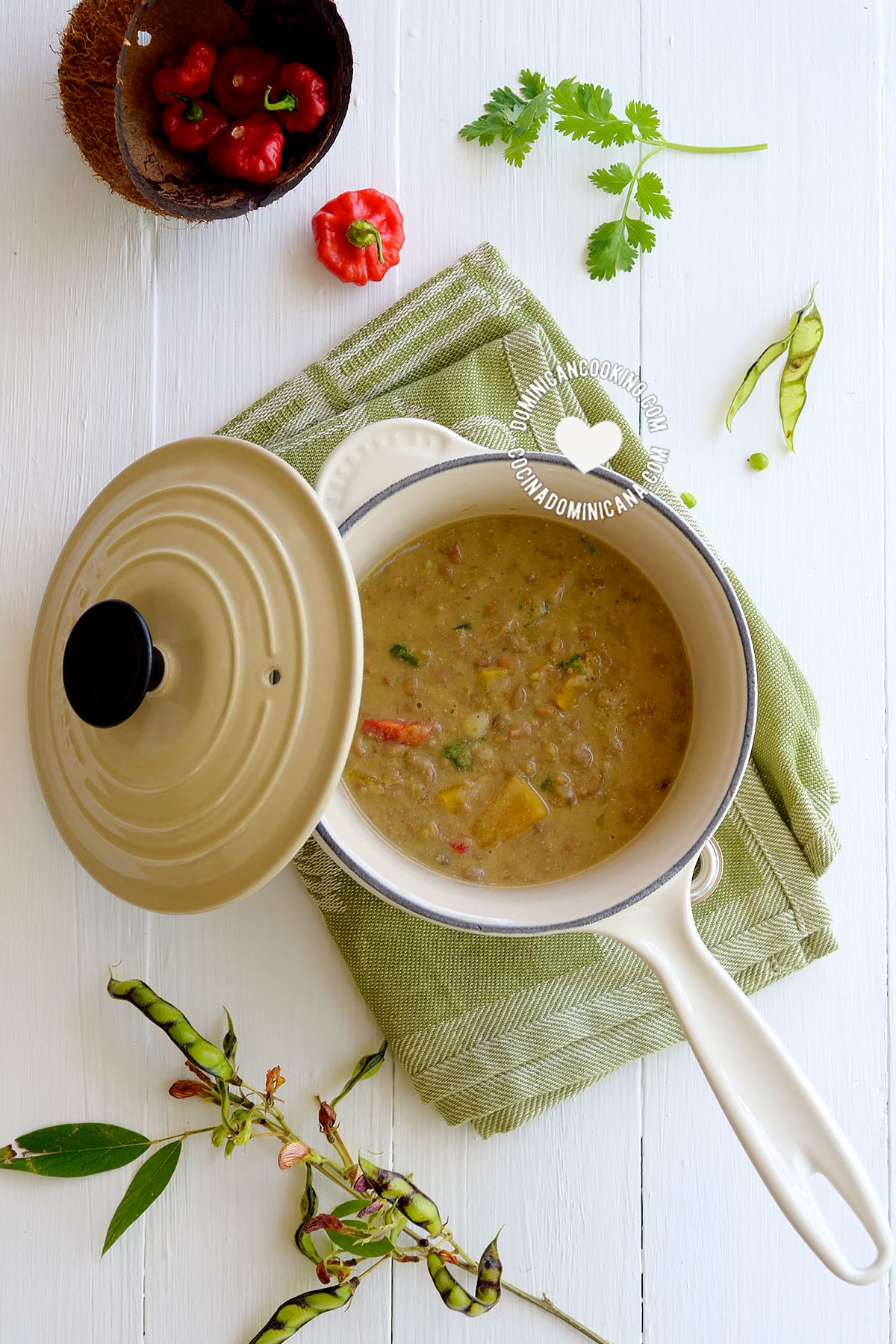
Guandules and guandules con coco.
Serving suggestions
A reader's suggestion: "If I had to choose a favorite meal, it would definitely be guandules con coco, Arroz blanco (white rice), Res guisada (beef stew), and Ensalada verde (green salad.)". I concur, palomabakesrd.
I would also add some Arepitas de yuca (yuca fritters) or Tostones (fried plantains). You can switch the above to one of our recipes for meat or fish.
Top tips
No pigeon peas? Tough luck, as there is no substitute for its smoky flavor. If you absolutely must do without it I have found mung beans to be the closest in flavor and texture.
There is no comparison between fresh guandules and dry or canned, so if you're lucky enough to be able to find freshly-shelled guandules, always pick that option.
If for some reason you do not want to add coconut, add an equivalent amount of vegetable broth. You can also add water and extra seasonings to amp up the flavors a bit.
About this recipe
As is customary, we remind you that different families make things in different ways. Furthermore, since this is a dish that the rest of the country adopted from its native Samaná, further changes have been made by every cook.
In the recipe, we give you directions to make it with fresh guandules (as in the video), canned, and dry.
What are your secrets to winning guandules guisados? Share it in the comments!

Video
Recipe
This awesome free recipe contains Amazon affiliate links, we receive a small commission from any purchase you make at no extra cost to you. Thanks for your support!

Guandules con Coco [Recipe + Video] Pigeon Peas with Coconut
Ingredients
- 3 cups fresh guandules (pigeon peas), or 4 cups canned, or 3 cups dry-then-boiled
- 2 tablespoon vegetable oil, (soy, corn or peanut)
- 1 small red onion, cut into quarters
- ¼ teaspoon oregano (dry, ground)
- 2 clove garlic, mashed
- 2 ají gustoso, (cachuchas, ají dulce, ajicitos) crushed (optional)
- 4 sprigs fresh thyme, (or 1 tsp. dry leaves)
- 2 cups coconut milk
- 3 cups water, (aprox.)
- 2 cups diced auyama (kabocha squash), or kabocha squash
- 3 sprigs parsley, (or cilantro) minced
- 1 teaspoon salt, or to taste
Instructions
1. Cook seasonings
- In a pot heat the oil over medium-low heat. Add onion and cook and stir until it becomes translucent. Add oregano, garlic, ajíes gustosos, and thyme. Cook and stir for a minute.
2. Sautee
- Add the pigeon peas. Cook stirring until they are heated through. Change heat to low. Follow the next step only If you are cooking with fresh guandules. Skip the next step if you are using boiled-from-dry or canned guandules.
3. Cooking fresh guandules
- Cover and let it cook over low heat, stirring often until the guandules are soft when you pinch them (about 35 minutes if freshly shelled, five to ten minutes if boiled or canned).There should be no need to add water, but add a couple of tablespoons if it becomes necessary to prevent it from burning.
4. Stewing
- Add the coconut milk and 3 cups of water (this can be the liquid you reserved from boiling, if you used dry guandules ). Once heated through, mash a bit to crush some of the guandules
5. Cooking auyama
- Add the auyama and boil over medium heat until it is cooked through and the peas reach a creamy consistency, adding more water as it becomes necessary to maintain the same level. Stir often to prevent it from sticking to the bottom of the pot. Remove the onion pieces and thyme (if you used fresh sprigs).Season with salt to taste and simmer for another two minutes.
6. Serving
- Remove from the heat and stir in the parsley and serve per suggestions above.
Nutrition
Nutritional information is calculated automatically based on ingredients listed. Please consult your doctor if you need precise nutrition information.
Want to save this recipe?
Enter your email & I'll send it to your inbox. ❤️ Plus, get great weekly recipes from me!
More recipes with coconut
Coconuts grow in abundance practically everywhere in the Dominican Republic, and we have many recipes with coconut. When you approach the Samaná peninsula, the landscape becomes a riot of coconut palms. Not surprisingly, coconut and its derivatives have become a permanent fixture of Dominican cuisine.
Coconut can be enjoyed as a refreshing agua de coco, or used as an ingredient in desserts. Some of the most popular ones are Dulce de coco, Arepa Dominicana, Helado de coco, Coconete, Jalao, Coco horneado and many more. On the non-traditional side, one of my favorite rice pudding variations is Coconut rice pudding.
Coconut milk/creamed coconut is the ingredient used in most savory dishes. It is available in cans, but do make sure you buy the unsweetened version for savory dishes like Moro de guandules (a mainstay of our holiday table, and most special events), Pescado con coco, Pan de coco, and Camarones con coco. The sweetened one is good for drinks like Piña colada.
FAQs
Yes, canned pigeon peas (guandules / gandules) are already cooked by boiling them in salted water.
Gandules / guandules are called "pigeon peas" in American English.


